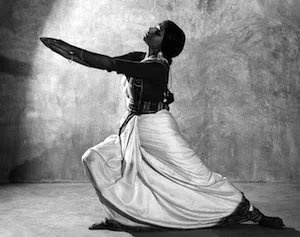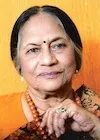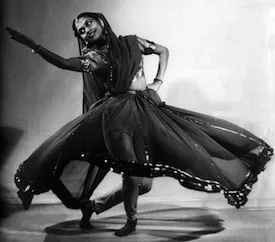Renowned Dancer Kumudini Lakhia: Tradition and Innovation Are Not Oppositional

In 1971, renowned classical dancer Kumudini Lakhia twisted her hair into a simple braid, dressed in an ordinary sari, and stepped in front of a live audience. Although known throughout India as a classical Kathak dancer, she wasn't wearing traditional stage make-up or garish accessories. She didn't use any traditional footwork, either; instead, her abstract movements were meant to depict a middle-aged wife and mother conflicted between a need for independence and a sense of duty. For many in the audience, this solo performance - entitled Duvidha ("internal conflict") - was a turning point for Kathak dance. The start of a new era.
The performance of Duvidha was staged less than a decade after Lakhia founded the Kadamb Center of Dance and Music, an Ahmedabad-based school of instruction that favors dialogue over dominance.

Kumudini Lakhia
"I was trained in the orthodox style of what is known as the guru-shishya tradition, or parampara," says Lakhia, this year's Visiting Cornell Professor. "This is a one-to-one training where the student was not allowed to speak or ask questions, even if the student had many, many questions. It is a rule-dominated style of teaching. After years of this training, my mind was full of questions and my body was ready to jump out of its skin. That's when I started teaching - not just because I wanted to teach, but because I wanted to see the form of dance on other bodies. I wanted to do something completely different. I wanted to create a movement laboratory. I wanted questions asked. I wanted dialogue. I wanted to know what made the dancers want to dance. I wanted to see what I missed."
Today, Lakhia is considered a pioneer in Indian contemporary dance movements. Her works set in motion what is now known as contemporary Kathak, and her choreographies are landmarks in the annals of Indian dance, ranging from contemporary choreographies to some of the iconic creations in Bombay films. She is the recipient of the some of the highest civilian awards in India, such as the Sangeet Natak Academy Award, Padma Shri, and Padma Bhusan.
On September 20, Lakhia, one of the most sought-after choreographers in the world, will give a faculty lecture and multimedia presentation on the history of Indian dance. The course she is teaching this semester, Creativity and Performance, will explore how traditional knowledge can be the spring board for innovation in thought and action.
One of Lakhia's most compelling messages is that the spirit of tradition and the drive of innovation are not oppositional ideas.
"The central nature of evolution is variation and integration, and we play a role in that tradition," she says. "It is a living art form. If we do not accept it, the art form would die out."

Lakhia in 1948
Lakhia was 17 in the late 1940s when she toured the world with Ram Gopal, a global sensation of Indian dance. She first visited the States in 1950, when she performed in New York, and has since traveled the world as a solo performer and choreographer.
"The more you see of the world, the more you want to put it in your work, the more you want to freeze everything you see and hold onto it," Lakhia says. "In creative arts, there is no end. The nearer you go to the horizon, the further it moves. The nearer you point to the infinite, the further away it goes. Creative artists are thinking all the time. There's a crowding in their minds. The more they see, the more they want to capture."



